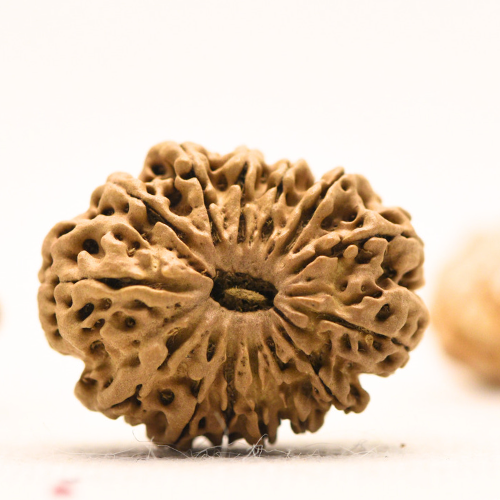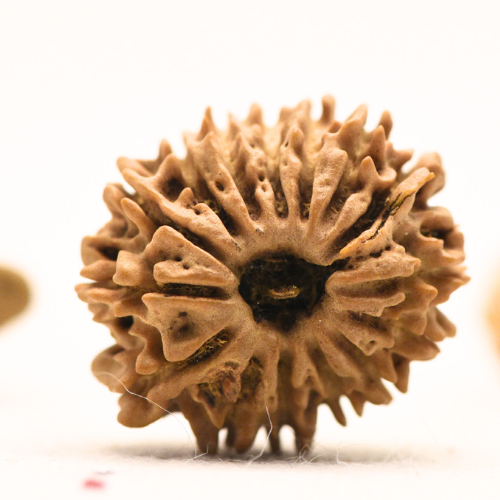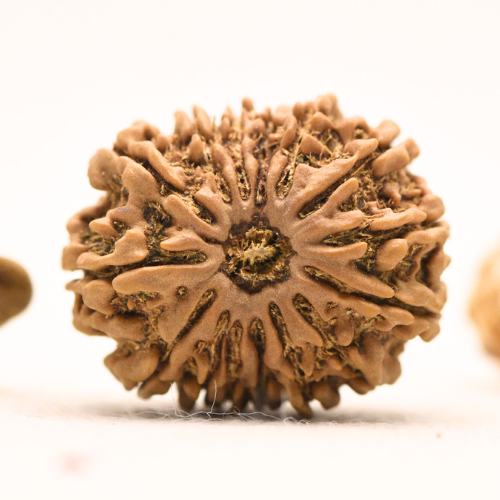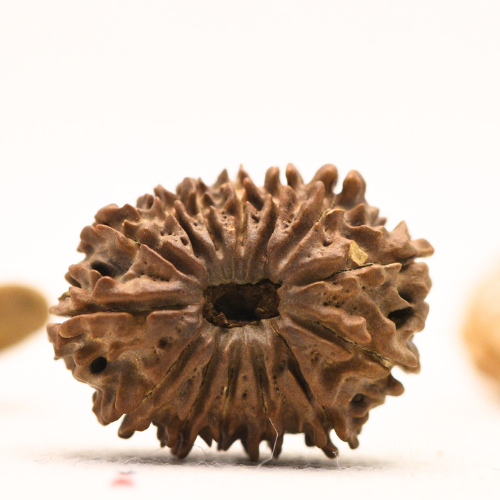Arudra Darshan
Adiyogi Rudraksha And Gemstones celebrates "Aruna Darshan" day, a special event that marks an auspicious occasion in the company's calendar. Since its foundation in 2003, Adiyogi Rudraksha and Gemstones has been at the forefront of the online gemstone market, championing the cause of authentic and spiritually potent Indian Navaratnas and a vast array of Rudrakshas
Arudra Darshan is an auspicious day to honor Bhagawan Shiva's cosmic ecstatic dance, which symbolizes the Pancha Krityas or five duties: Srishti (Creation), Sthithi (Preservation), Laya (Destruction), Tirobhav (Concealment and Revival), and Anugraha (Salvation).
Arudra Darisanam is celebrated on Purnima, or a full moon night, with the Arudra natal star in Margazhi, which is the longest night of the year.
When Is Arudra Darshan Celebrated in 2025?
Arudra Darshan is held on Thiruvadhirai Nakshathram. Ardra Nakshatra, sometimes called Arudara or Thiruvathirai in South India, is the sixth of the 27 Nakshatras.There are no Arudra Darshan festivals in the year 2024.
Arudra Darshanam Falls. On Monday, January 13, 2025.
Thiruvathirai Nakshathram. Begins at 11:24 AM on January 12, 2025.
Thiruvathirai Nakshathram. Ends - 10:38 AM, January 13, 2025
Bhagawan Shiva as Nataraja portrays Shiva's cosmic dance, which symbolizes the five facets of divine sovereignty over the universe: creation, preservation, destruction, illusion, and grace. Bhagawan Shiva's dance moves generate matter, energy, and music. The attributes manifest themselves, and all spheres, fueled by atomic energy, move in tandem with his body. His matted hair is seen whirling, his leopard skin garments swirl off his body, and the serpent hurled off his neck by his pace finds it impossible to coil, all as the Gods, Goddesses, and Ganas gather to see the cosmic dance.
This dance of the cosmic spheres symbolizes the never-ending cycle of creating and destroying things. This dance in space is where all energy originates, and it occurs in every particle. The Arudra Darshan dance commemorates Bhagawan Shiva's joyous dance. The most essential aspect of the Margazhi Brahmotsavam is the Arudra Darshan at Chidambaram Nataraja Temple.
The six-headed Kartikeya beats a circular drum and bell, and the four-armed Bhagawan Ganesha plays the veena, joined by Goddess Parvati, Bhagawan Shiva's wife. Nandi, the bull, listened intently to the music composed by Bhagawan Shiva's celestial symphony. During the cosmic event, Banasura, Bhagawan Shiva's fervent follower, performed an incredible number of drums and instruments.
It is celebrated with great enthusiasm at the Tiruvalankadu Temple, the Nellaiappar Temple, the Kutralanathar Temple, the Tiruvarur Temple, the Kapaleeswarar Temple, and many other Bhagawan Shiva temples around the world.
Significance of Shiva Dance
Shiva's Cosmic Dance would symbolize an unending cycle of transformation. Shiva as Nataraja is a breathtaking and dazzling representation of the Universe's periodic or cyclical nature. Nataraja depicts Dancing Shiva, the Supreme God, as a cosmically joyous and ecstatic dancer. His dance is known as Lasya, but it can also be called Nadanta or Tandavam, depending on the context of the dance movements.
The Nadanta, Shiva's dance, represents the interplay and incarnation of cosmic forces of nature, as well as the pulse of electronic energy within the cosmos. In the Nadanta dance, Shiva personifies the kinetic aspect of his holiness, the underlying power that generates, sustains, and eventually destroys the entire universe. He is the personification of the Supreme Intelligence, the Divine Spirit, performing the Karma Dance.
The opposite dance Tandava is a violent and dangerous dance that symbolizes destruction. This disaster is associated with the breakdown of exhausted global views, tired perspectives, and tired lifestyles. The core is that the Lasya and Tandava are two elements of Shiva's nature: he destroys in order to build and pulls down in order to rebuild.
In his superb Nataraja portrayal, the upper left hand holding a small drum represents 'creation,' fire on the upper right hand represents 'destruction,' the second right hand showing 'abhaya mudra' represents 'protection,' and the second left hand pointing to his feet represents'salvation and grace,' all within a ring of fire that represents a continuous cycle that holds all four known representations of the universe.
Nataraja also makes the five elements that make up the universe apparent. The flame in his left hand represents the element Fire. The damaru represents the element Air. The sound and vibration are enabled by the air within it. Furthermore, the snake around his neck represents air, as the snake slithers in the same way that air (oxygen) slinks down throughout our bodies. We cannot see the fifth element, Akasha or Ether. It's the space between his stable right leg and his elevated foot. The dwarf upon whom He dances represents the Earth element. The Water element is symbolized by the goddess Ganga, who has matted his hair and is the source of the holy Ganges river.
He performs a dance on the dwarf demon'muyalakan', which signifies 'ignorance.' The artwork highlights this: if someone places their 'ignorance' at God's feet, God will protect them from the never-ending cycle of creation and destruction that eventually leads to redemption. Thus, the monster under Nataraja's feet represents Shiva's victory over ignorance. Bhagawan Shiva is also worshipped at the Chidambaram temple as Akasa Lingam, or the formless shape known as Chidambara Rahasyam.
Legend of Arudra Darshan.
According to tradition, Bhagawan Shiva performed the cosmic dance in his Nataraja avatar at Chidambaram for his devotees, Adi Shesha and Vyagrapaadar. Adishesha is the seven-hooded snake that Bhagawan Vishnu sits upon in the Milky Ocean. He longed to see the cosmic dance of creation. Bhagawan Shiva told him to take the guise of Sage Patanjali and visit Thillai Forest to perform the dance. Sage Vyagrapaadar was a Bhagawan Shiva devotee who underwent great penance and tapas to observe the Ananda Tandav. Bhagawan Shiva did a dance for the two devotees in Chidambaram.
Another tale says that Thillai was home to a group of sages with magical powers. They believed that by performing rituals and chants, they could influence God. To quell their vanity and ego, Bhagawan Shiva appeared in the forest as Bhikshadanar, a mendicant. He was really attractive and was joined by his consort. The attractive mendicant and his wife mesmerized the sages and their wives. However, the sages grew enraged when they observed their wives pursuing the wanderer. They used magic to create a large number of serpents. The mendicant wore them as ornaments on his matted hair, waist, and neck. They summoned a ferocious tiger, which Bhagawan Shiva skinned and wore as his loincloth. The frustrated sages used their spiritual abilities to summon Muyalakan, a formidable demon representing ignorance and hubris. Bhagawan Shiva immobilized the demon and danced the Ánanda Thandava, symbolizing endless happiness. When the sages learned who the mendicant was, they prostrated at his feet.
Arudra Darshan Celebrations.
In Tamil Nadu, the Chidambaram Nataraja temple and Bhagawan Nataraja Urchavam host the most elaborate Arudra Darshan celebrations. Bhagawan Shiva's cosmic dance is performed at the temple. The festival is also held at the Tiruvannamalai Arunachaleswarar temple. At the temple, Bhagawan Shiva is worshipped in his Nataraja form, holding the Ananda Tandava stance. The event corresponds with the end of Margazhi Brahmotsavam.
The Chidambaram temple is also known as the Thillai Nataraja temple, after a forest of Thillai trees that previously stood where the temple stands now. It was constructed in the tenth century, when Chidambaram was the capital of the Chola monarchs. It is one of the Pancha Bhootha temples, representing the element of space, or Akasa (sky), which is located at the middle of the earth's magnetic equator.
Fasting on Arudra Darshan is particularly auspicious.
Sage Vyagrapada, Munichakkar, and the serpent Karkotaka performed a vrat on Arudra Darisanam and were rewarded with the opportunity to witness Bhagawan Shiva's dance. After observing a vrat, Sage Vyagrapada was gifted with a son named Upamanyu Vipular. It is said that a Brahmin observed the vrat and was fortunate enough to see Kailash in a heavenly journey.
Benefits of Performing Vrat During Arudra Darshan:
Helps to overcome fear, anxieties, and challenges.
Provides protection from hostile powers, witchcraft, and foes.
Neutralizes negative planetary influences in the birth chart.
Offers the possibility of success, riches, and material comfort.
Removes the negative consequences of past life karma.
Addresses relationship and debt difficulties.
Clarifies cognition and action.
Revitalizes health.
Arudra Darshan Vrat According to legend, Bhagawan Vishnu was resting quietly on his snake couch, contemplating blissfully. Adisesha, the five-headed snake that accompanied Bhagawan Vishnu, questioned about his thoughts. He responded by thinking of Bhagawan Shiva's beautiful cosmic dance. When Adisesha questioned about the possibilities of witnessing the heavenly dance, Bhagawan Vishnu advised him to practice hard penance. Adisesha zealously meditated in Chidambaram to appease Bhagawan Shiva. During Arudra darshan, he eventually observed Shiva as Nataraja performing a cosmic dance in Chidambaram, accompanied by sages Vyagrapada and Patanjali.
Arudra Darshan Vrat
The event takes place in Tiruvannamalai Arunachaleswarar Temple during the Ardra Nakshatra in the month of Margazhi. On this day, the temple celebrates with elaborate pujas and rituals.
On Thiruvaadhirai, people wake up early to worship Shiva Nataraja's idol.After having a bath and doing the daily rituals, devotees go to Bhagawan Shiva's home.Offerings are made to Bhagawan Shiva, and Abhishekam is carried out. Devotees also witness Bhagawan Nataraja's sacred anointing ceremony, which involves lighting the dwelling of Bhagawan Shiva with ghee lamps.
On this day, a special delicacy called 'kali' and 'thalakam', a multi-vegetable dish, are cooked to commemorate Bhagawan Shiva's cosmic dance.During Thiruvadhirai vrat, devotees fast for the day and break it after worshipping Bhagawan Shiva.
On this day, a special Abhishek is conducted in front of the Shiva Nataraja deity in all temples using milk, curd, honey, sugarcane juice, turmeric, sandalwood paste, and rose water. Devotees make and offer the Bhagawan a special jaggery-based dish known as 'Thiruvathirai Kali'.
The idols of Goddess Parvati and Bhagawan Shiva are decorated with flowers, chandan, turmeric, and kumkum, and lamps and incense sticks are lit. Prayer hymns to Bhagawan Shiva are read and performed.
Naivedyam includes a special dish called Thiruvathirai Kali (rice granules with jaggery) and Kootu (a spicy mixed vegetable curry). After the aarti, Naivedyam is served as prasadam.
Nataraja temples serve abhishekam, which includes milk, curd, honey, and fruits. Special homams and Yagnas are held to honour Sri Nataraja Swamy. A procession of Sri Nataraja Urchava Murthy is carried out.
Thiruvadirai Mai, a paste formed from black ash and ghee, is offered to devotees and smeared to their foreheads for protection.
The Thiruvathirai Festival in Kerala is devoted to Shiva and Parvati.
Arudra Darshan Mantra.
ॐ तत्पुरुषाय विद्महे ताण्डवेशाय धीमहि तन्नो नटेश: प्रचोदयात्
ॐ त्रयम्बकाय विद्महे त्रिशूल हस्ताय धीमहि तन्नो नटराज: प्रचोदयात्





